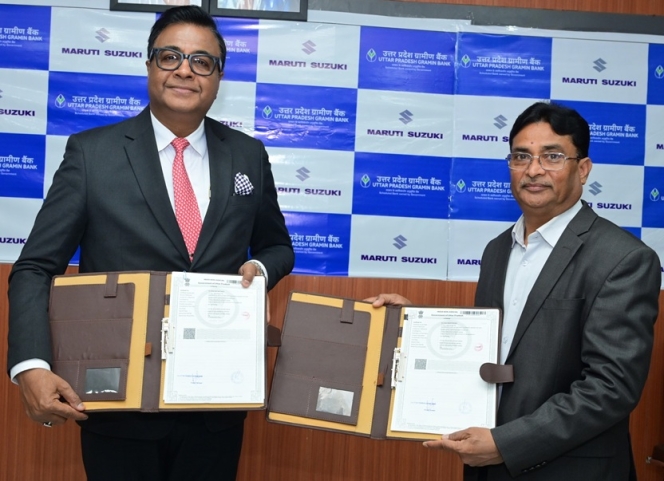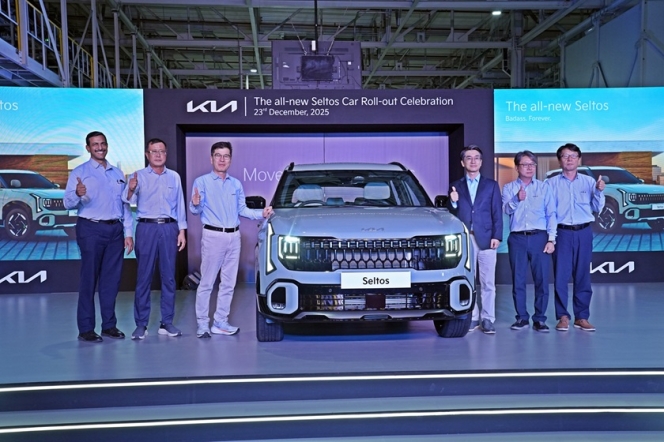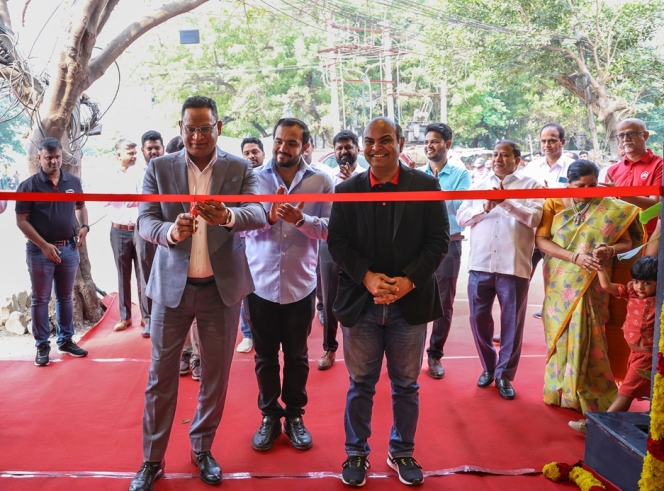
General Motors announced in November 2020 that it’s speeding up its plan towards electrification and is aiming to have 30 electric vehicles on the market by 2025. This was followed by CEO Mary Barra’s announcement on January 28, 2021, that General Motors will stop producing vehicles that run on petrol or diesel fuel over the next 14 years, replacing the fleet with all-electric cars SUVs and light trucks. Barra also promised the company would be net carbon-neutral by 2040, reducing the greenhouse gas pollution it produces and purchasing carbon offsets to make up for existing emissions. President Biden administration is “encouraging” this shift through the Federal Government’s procurement budget and policies to accelerate an EV transition.
GM’s brand identity logo has been a familiar one worldwide:


But as part of the new initiative, GM is retiring the familiar blue square and has rolled out a new brand identity to focus on full electrification, it also changed its logo and kicked off an ad campaign promoting its commitment to E’s – EV and Environment.

GM claims its new look – created by in-house designers – is more “modern and vibrant” than the previous logos. The rebrand consists of a light blue lower-case ‘gm’ with a colour gradient, which sits in a white box outlined by the same light blue. Instead of having both letters underlined, there’s now a line under just the letter m’. GM insists that much like the logos of the past, the look is clean and simple. The new colour scheme - dark blue fading to light blue - and the lower-case letters, are intended to project a new era.
Sharon Gauci, GM’s executive director of Global Industrial Design, said, “The new GM logo features colour gradient of vibrant blue tones, evoking the clean skies of a zero-emissions future and the energy of the Ultium platform. The rounded edges and lower-case font create a more modern, inclusive feel.”
Some industry observers do not like the choice of lower-case typeface, which may not project strength that the previous logo’s bold letters did. According to them, the fading colour scheme and lower-case letters do not feel strong or enticing enough.
Interestingly, the automaker says that there is more to that ‘m’ than you might have immediately noticed! There is an optical illusion hidden in the new logo, and GM hopes that the world will not miss it. Still, just in case you missed it, the blank space above the underline and between legs of the “m” is supposed to look like an electric plug! Compare that to the FedEx logo, which is well-known for its not-so-hidden optical illusion. Even a cursory look is enough to spot a white arrow, signifying speed and accuracy.
GM’s campaign for the new brand identity is labelled ‘Everybody In’, and while the world is certainly up for ways to make driving less damaging to the environment, it remains to be seen if the new logo is up to the job. Whether GM needs to make a U-turn on the logo remains to be seen, but, right now it’s full-speed-ahead for GM with this new logo! All legacy automakers, who specialised in building and selling fossil-fueled vehicles for over a century, need to build entirely new strengths in a hurry. GM could see its big risk pay off - the company will just have to bet everything it has to find out. (MT)

Citroen India Delivers 51 C3 CNG Vehicles To Luthra Group
- By MT Bureau
- December 24, 2025
Citroen India, in partnership with its dealership La Maison Nanavati, has completed the handover of 51 Citroen C3 CNG vehicles to the Luthra Group. The ceremony took place at the Luthra Group’s headquarters in Surat.
The delivery is part of Citroen's strategy to expand its presence in tier-II and tier-III markets by providing mobility solutions to businesses and individuals.
The Citroen C3 CNG is designed for high-usage environments and daily commutes. The model includes several features tailored for the Indian market, integration of a factory-fitted CNG kit to manage running costs. A suspension system tuned specifically for local road conditions. Provisions for cabin space and air-conditioning systems designed for high-ambient temperatures.
The handover to Luthra Group represents the brand's focus on cost-efficient transportation. By targeting the regional business sector, Citroen India aims to strengthen its footprint in Gujarat and the broader Indian mobility market.
The C3 CNG is positioned as a solution for users requiring reliability and low operating expenses without compromising on ride comfort.
Maruti Suzuki India Partners Uttar Pradesh Gramin Bank For Retail Financing
- By MT Bureau
- December 24, 2025

Maruti Suzuki India has signed a Memorandum of Understanding (MoU) with Uttar Pradesh Gramin Bank, a regional rural bank, for vehicle retail financing partnership on new cars, pre-owned vehicles and commercial vehicles.
This collaboration marks the 50th retail finance partner for Maruti Suzuki India. The partnership is intended to use the bank’s network to provide credit options to a range of customer profiles, particularly in rural and semi-urban regions.
The partnership aims to increase the accessibility of Maruti Suzuki products through, tailored finance schemes designed for rural and regional customers.
Partho Banerjee, Senior Executive Officer, Marketing & Sales, Maruti Suzuki India, said, “Our partnership with Uttar Pradesh Gramin Bank marks a significant milestone as we onboard our 50th retail finance partner. This reinforces our commitment to making car ownership simpler and more affordable for customers across India. By expanding our reach through this strategic alliance, we aim to empower buyers with competitive, customer-friendly financing solutions that enhance the overall purchase experience. We remain focused on delivering seamless, tailored finance options, and this collaboration strengthens our vision of providing the Joy of Mobility to aspiring Indian consumers.”
Yadav S. Thakur, Chairman, Uttar Pradesh Gramin Bank, said, “At Uttar Pradesh Gramin Bank, empowering customer aspirations is at the heart of everything we do. Our partnership with Maruti Suzuki, a leader in the automotive industry, is a strategic step towards enhancing our service offerings and delivering greater value to our customers. This collaboration aligns with our 'Customer-First' mission, enabling us to provide accessible and affordable vehicle financing solutions. We look forward to helping more individuals and families across the country realise their dream of owning a Maruti Suzuki vehicle.”
Kia India Commences Production Of New Seltos In Anantapur
- By MT Bureau
- December 23, 2025

Kia India has started production of the latest generation Seltos at its manufacturing facility in Anantapur. The company has confirmed that prices for the mid-SUV will be announced on 2 January 2026.
The Anantapur plant, established in 2019, serves as a hub for both the Indian domestic market and international exports. The facility uses automation and a local workforce to manufacture the Seltos, which was the first model produced by the company in India.
The new model is built on Kia’s K3 platform, which has been engineered to increase structural rigidity and improve suspension damping. The vehicle has grown in size compared to its predecessor to increase cabin space and stability. It has 4,460 mm of length, 1,830 mm of width and a wheelbase of 2,690 mm.
The exterior design follows the ‘Opposites United’ philosophy, featuring a ‘Digital Tiger Face,’ LED projection headlamps, and alloy wheels with neon brake callipers.
The vehicle integrates several digital interfaces and driver assistance systems. It features an upgraded Kia Connect 2.0 suite with over-the-air (OTA) software updates and a proximity unlock function.
In terms of safety, it gets 24 features as standard, while ADAS Level 2 offers 21 autonomous features to assist the driver. The Kia Seltos SUV comes with three engine options – 1.5-litre Petrol producing 115 PS of power and 144 Nm of torque, 1.5 T-GDI Petrol producing 160 PS of power and 253 Nm of torque and a 1.5-litre diesel engine producing 116 PS of power and 250 Nm of torque.
Transmission choices include a 6-speed manual (6MT), intelligent manual (6iMT), IVT, 7-speed dual-clutch (7DCT) and a 6-speed automatic (6AT). The model will be sold in four trims – HTE, HTK, HTX and GTX – with additional option variants and an X-Line styling pack.
Gwanggu Lee, Managing Director & CEO, Kia India, said, “The roll-out of the All-New Kia Seltos marks a proud milestone for Kia India. Seltos has long set benchmarks in the mid-SUV segment, and this new generation represents a bigger, bolder, and more progressive evolution shaped by insights from Indian customers. With production now underway at our Anantapur facility, our teams are fully geared to ensure customers can take delivery of their all-new Seltos without long waiting periods. We are confident the all-new Seltos will once again redefine expectations in the segment and strengthen Kia’s leadership in India."
“The new Seltos looks fantastic. The Anantapur team, together with our supplier partners, have done an outstanding job in delivering our customers a great looking, significantly bigger, technologically progressive and safe vehicle with impressive functionality and connectivity,” he said.
- Citroen India
- Jeep
- Stellantis
- Citroen 2.0
- Shailesh Hazela
- Kumar Priyesh
- Sree Venkata Teja Kethineni
- VTK Automobiles
Citroen India Opens 126th Outlet In Chennai Under Citroen 2.0 Strategy
- By MT Bureau
- December 23, 2025

Stellantis-owned French automotive brand Citroen India has inaugurated its 126th point of sales and service (POS&S) facility in Chennai, continuing the expansion of its network under the ‘Citroen 2.0 – Shift Into The New’ strategy.
The new 3S (Sales, Service and Spares) facility is located at Chitlapakkam, near Chrompet. It is an extension of the partnership with VTK Automobiles, which now operates five Citroen touchpoints in the city. The outlet functions as a ‘Stellantis Brand House,’ allowing customers to access both Citroen and Jeep brands within a single space.
Since the announcement of the Citroen 2.0 strategy, the brand has increased its network by 48.6 percent. Over the last six months, the company added 43 points of sale through its network expansion programmes. Citroen expects to reach a total of 135 outlets by the end of the year, with further operations planned for the north, west, and east of India.
The strategy focuses on several pillars – deepening the domestic supply chain for India-centric products. Expanding the dealer footprint into Tier 2 and Tier 3 locations. Using digital tools and unified spaces for sales and aftersales services.
Shailesh Hazela, CEO and Managing Director, Stellantis India, said, “The expansion of Stellantis network further with VTK dealership in Chennai marks another important step in Citroen and Jeep India’s network growth strategy. Chennai is a key market for us, and this upgraded facility will enable us to serve our customers better with a seamless sales and ownership experience. Aligned with our Citroen 2.0 strategy, we remain committed to strengthening our dealer partnerships and building a robust, customer-centric network across the country.”
Kumar Priyesh, Director Automotive Brands, Stellantis India, said, “We have grown our network by almost 48.6 percent since we announced the Citroen 2.0 strategy and have been able to expand our operations in different parts of country: adding tier 2/3 locations while further strengthening in Metro/ Tier 1 cities. Through project Visitar, Network Expansion Program and expansion in new geographies we added over 43 POS in the last 6 months and are already in advanced stages to start additional operations in North, West and Eastern parts of the country and expected to close the year with 135 POS for Citroen.”
Sree Venkata Teja Kethineni, Dealer Principal, VTK Automobiles, said, “We’re happy to partner to this pivotal shift in automotive retail, proudly representing Jeep and Citroen. Our dual-brand strategy empowers us to deliver a truly elevated and distinctive experience – whether customers seek rugged performance or refined sophistication. With passion, professionalism and personalised care at the core, our team is committed to exceeding expectations and upholding the global standards these iconic brands represent.”
The facility includes a service centre equipped with diagnostics and digital tools. Staff members are trained across both Jeep and Citroen product lines to provide technical support and product information.






Comments (0)
ADD COMMENT